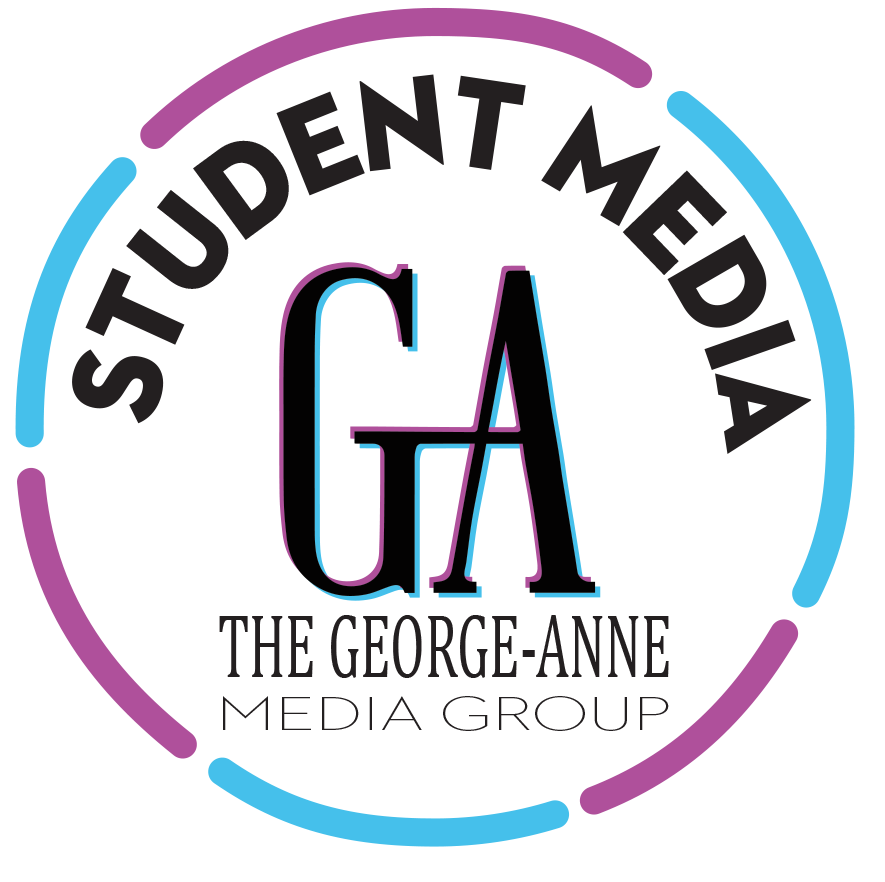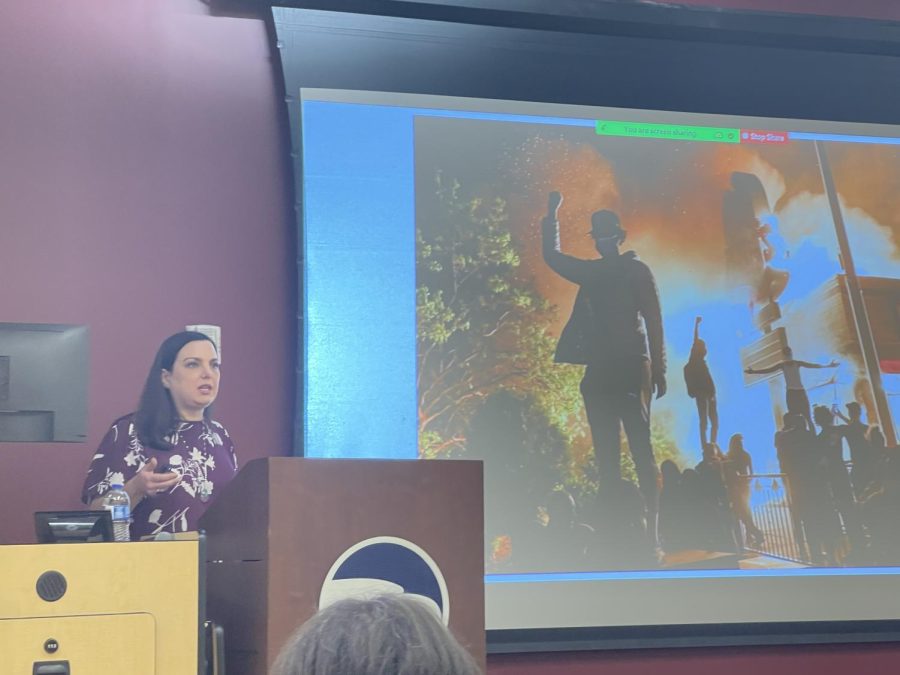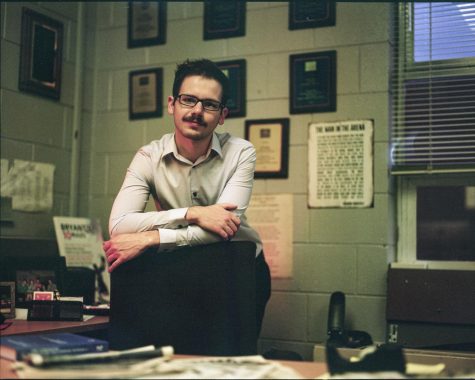How the Media Frames Activism
Dr. Cowart presents an example of the media framing a protest.
February 8, 2022
The news media does not just tell us what to think about. It also subliminally tells us how we should think about it.
Georgia Southern Multimedia Journalism Professor Dr. Holly Cowart presented the Robert I. Strozier Faculty Lecture Series on Friday, Feb. 4, 2022.
Dr. Cowart’s lecture presented examples of differences in how the media portrayed images of protestors and police officers, specifically looking at the 2014 Ferguson protests following the shooting of Michael Brown and the 2020 protests following the murder of George Floyd.
Dr. Cowart and her colleagues researched the nature of the images posted on Twitter by major news outlets covering these protests. She and her fellow researchers discovered an intriguing shift in how the media portrayed the events.
A primary aspect of the research was analyzing the number of images showing a strong police force, versus images showing a united protest. The researchers then compared these numbers from 2014 to 2020 and discovered that the media focused more on featuring the police in 2014 while focusing more on the protesters in 2020.
“In 2020, the police percent goes down, and the protester number goes up.”
Alongside the quantitative data, the research indicated that the situations were framed differently. The 2014 coverage painted the protests as chaotic, violent riots, while the 2020 coverage presented the protests as an organized movement.
The reasons behind these differences in coverage may vary and are worth discussion and debate. Dr. Cowart mentioned that since journalists have established relationships with police offices for decades, it’s traditionally been easier to get statements and quotes from the officers than from protest organizers, who have fewer resources and less media training than law enforcement.
Due to the massive scope and organization of the Black Lives Matter movement in 2020, it was likely easier to take statements and quotes from both sides than it was in 2014.
Dr. Cowart opened the lecture up to questions at the end of her presentation, and was asked if big media had financial incentive to follow cultural trends, specifically with the popular narrative shifting from supporting the badge, to supporting the Black Lives Matter movement.
“I like to think that there’s enough independence in the field… They’re not thinking about the way (they) have to get this picture because this is money for (their) publication… But I do think there’s a sizable push towards the protestors.”
Georgia Southern has made several efforts to support the Black Lives Matter movement since the 2020 protests. For more news and cultural coverage on the Armstrong Campus, visit the Inkwell’s website.




